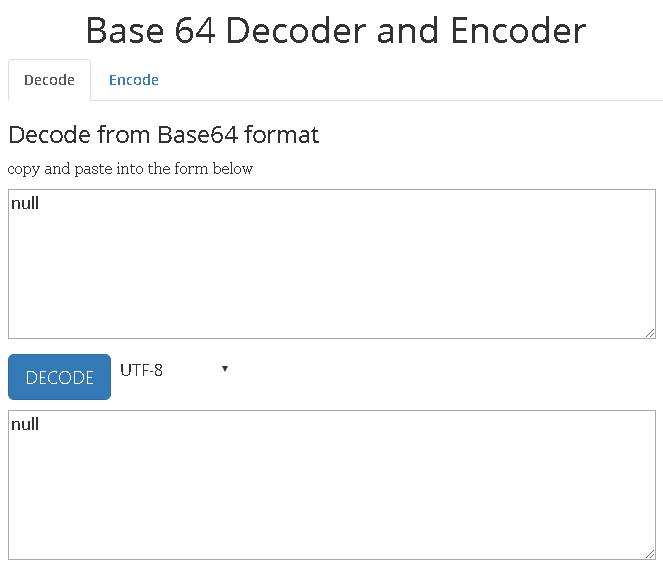

Which is a lust of the mind, that by a perseverance of delight in the continued and indefatigable generation of knowledge,Įxceeds the short vehemence of any carnal pleasure. Usage Example local source = is distinguished, not only by his reason, but by this singular passion from other animals,

Determine if we need to handle any bit padding from the encode was a blob, you will need to use the blob method. JSONObject postDataParams new JSONObject () postDataParams.put (ArchivoTexto, encoded) now the problem that I see is that when I send the JSON the encoded string that the console says its sending something that looks like this: \/9j\/4AAQSkZJRgABAQAAAQABAAD\/2wB. 'decode()' takes a base64 string and returns the decoded string. If (j = 2 & (group & 0x03) = 0) padFlag = true If (j = 1 & (group & 0x0F) = 0) padFlag = true Check for what may be the last bits of the source Display the base64 padding indicators as required It includes a table, base64, which contains two functions, encode() and decode() which, respectively, generate a base64 encoding of a blob or string, and convert a base64 string into a readable string.
SENDING BASE64 ENCODING WITH JSON CODE
The following code provides base64 encoding and decoding. Of course, your JSON decoder at the other end will need to know that any base64-encoded strings it encounters should be parsed as binary data. However, you can use the code below to base64-encode your blobs and then add the resulting strings to your JSON structure. However, there are occasions when your device code might need to make use of this functionality.įor example, if you are storing device-generated information in JSON format, you can not currently store blobs in the structure: blobs are not part of JSON specifications. Sometimes you have to send or output an image. This is because base64-encoded data can be encountered when interacting with cloud services, but rarely on the device side of the application. Convert image to Base64 online and use the result string as data URI, img src, CSS background-url, and others. Base64 encoding (and decoding) is available to agents through the imp API’s http object, but it is not available on the device.


 0 kommentar(er)
0 kommentar(er)
